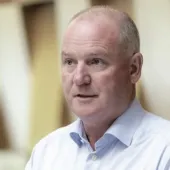CEMEX announce new investment in the Philippines

Company prepares for increasing demand in the country with further investment of US$300 million
CEMEX are to undertake a new US$300 million investment programme in the Philippines, which will include the construction of a new 1.5 million-tonne integrated cement production line at the company’s Solid plant in Luzon.
This will double the capacity of the Solid plant and will represent a 25% increase in the company’s cement capacity in the Philippines.
With the recent visit of Fernando A. Gonzalez, chief executive officer of CEMEX, and his executive team in the country, highlighted by a meeting with His Excellency President Benigno S. Aquino III, CEMEX have emphasized their continued commitment to the growth of the country.
‘We see a positive outlook in the business environment and we are committed to being a reliable cement supplier given the growing need for high-quality building materials required for public infrastructure, commercial projects and housing,’ said Mr Gonzalez (pictured).
Earlier this month CEMEX Philippines officially inaugurated the completed capacity expansion at their APO plant in Cebu, the largest cement plant in the country, as well as a network of logistics centres in Visayas and Mindanao.
This US$80 million investment has increased cement production capacity at the APO plant by 40%, and helped improve distribution capabilities with additional terminals in Iloilo and Davao.
‘We are preparing our facilities for the increasing demand in the Philippines, reiterating our commitment to support the development of the country,’ commented Joaquin Estrada, president of CEMEX Asia. ‘We will endeavour to be a partner of the Philippine Government and the business community in ensuring growth and progress.’
In addition, CEMEX Philippines have set up a US$18.6 million waste heat-to-energy power plant which will capture excess heat from one of their cement production facilities to produce usable electricity. CEMEX Philippines are already using alternative fuels such as rice husks and refuse-derived fuel (RDF) as part of their fuel mix to minimize energy costs.
With all these developments within the company, CEMEX Philippines’ president, Pedro Palomino, says he remains optimistic. ‘We are definitely here for the long run and we remain committed to helping build a better future for the Philippines,’ he stressed.









